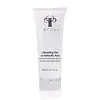What's inside
What's inside
 Key Ingredients
Key Ingredients

 Benefits
Benefits

 Concerns
Concerns

 Ingredients Side-by-side
Ingredients Side-by-side

Water
Skin ConditioningSodium C14-16 Olefin Sulfonate
CleansingLauryl Hydroxysultaine
CleansingSodium Methyl Cocoyl Taurate
CleansingGlycerin
HumectantAcrylates/C10-30 Alkyl Acrylate Crosspolymer
Emulsion StabilisingCaprylyl Glycol
EmollientCentella Asiatica Extract
CleansingSodium Chloride
Masking1,2-Hexanediol
Skin ConditioningSalicylic Acid
MaskingHexadecene
SolventTetradecene
EmollientMentha Piperita Oil
MaskingSodium Sulfate
Mentha Piperita Extract
CleansingCentella Asiatica Leaf Extract
Skin ConditioningMelia Azadirachta Leaf Extract
Skin ConditioningDisodium EDTA
Betaine
HumectantAllantoin
Skin ConditioningPanthenol
Skin ConditioningMelia Azadirachta Flower Extract
Skin ConditioningDextrin
AbsorbentTheobroma Cacao Extract
Skin ConditioningPropanediol
SolventBetula Platyphylla Japonica Juice
Skin ConditioningButylene Glycol
HumectantPapain
Skin ConditioningHydrolyzed Sodium Hyaluronate
Skin ConditioningGinkgo Biloba Leaf Extract
Skin ConditioningArtemisia Annua Extract
MaskingEthylhexylglycerin
Skin ConditioningFicus Carica Fruit Extract
HumectantAloe Barbadensis Leaf Extract
EmollientDioscorea Japonica Root Extract
Skin ConditioningLaminaria Japonica Extract
Skin ProtectingLactobacillus Ferment Lysate
Skin ConditioningViola Mandshurica Flower Extract
AntioxidantUlmus Davidiana Root Extract
Skin ConditioningPentylene Glycol
Skin ConditioningTaraxacum Officinale Leaf Extract
Skin ConditioningWater, Sodium C14-16 Olefin Sulfonate, Lauryl Hydroxysultaine, Sodium Methyl Cocoyl Taurate, Glycerin, Acrylates/C10-30 Alkyl Acrylate Crosspolymer, Caprylyl Glycol, Centella Asiatica Extract, Sodium Chloride, 1,2-Hexanediol, Salicylic Acid, Hexadecene, Tetradecene, Mentha Piperita Oil, Sodium Sulfate, Mentha Piperita Extract, Centella Asiatica Leaf Extract, Melia Azadirachta Leaf Extract, Disodium EDTA, Betaine, Allantoin, Panthenol, Melia Azadirachta Flower Extract, Dextrin, Theobroma Cacao Extract, Propanediol, Betula Platyphylla Japonica Juice, Butylene Glycol, Papain, Hydrolyzed Sodium Hyaluronate, Ginkgo Biloba Leaf Extract, Artemisia Annua Extract, Ethylhexylglycerin, Ficus Carica Fruit Extract, Aloe Barbadensis Leaf Extract, Dioscorea Japonica Root Extract, Laminaria Japonica Extract, Lactobacillus Ferment Lysate, Viola Mandshurica Flower Extract, Ulmus Davidiana Root Extract, Pentylene Glycol, Taraxacum Officinale Leaf Extract
Ingredients Explained
These ingredients are found in both products.
Ingredients higher up in an ingredient list are typically present in a larger amount.
1,2-Hexanediol is a synthetic liquid and another multi-functional powerhouse.
It is a:
- Humectant, drawing moisture into the skin
- Emollient, helping to soften skin
- Solvent, dispersing and stabilizing formulas
- Preservative booster, enhancing the antimicrobial activity of other preservatives
Caprylyl Glycol is a humectant and emollient, meaning it attracts and preserves moisture.
It is a common ingredient in many products, especially those designed to hydrate skin. The primary benefits are retaining moisture, skin softening, and promoting a healthy skin barrier.
Though Caprylyl Glycol is an alcohol derived from fatty acids, it is not the kind that can dry out skin.
This ingredient is also used as a preservative to extend the life of products. It has slight antimicrobial properties.
Learn more about Caprylyl GlycolPanthenol is a common ingredient that helps hydrate and soothe the skin. It is found naturally in our skin and hair.
There are two forms of panthenol: D and L.
D-panthenol is also known as dexpanthenol. Most cosmetics use dexpanthenol or a mixture of D and L-panthenol.
Panthenol is famous due to its ability to go deeper into the skin's layers. Using this ingredient has numerous pros (and no cons):
Like hyaluronic acid, panthenol is a humectant. Humectants are able to bind and hold large amounts of water to keep skin hydrated.
This ingredient works well for wound healing. It works by increasing tissue in the wound and helps close open wounds.
Once oxidized, panthenol converts to pantothenic acid. Panthothenic acid is found in all living cells.
This ingredient is also referred to as pro-vitamin B5.
Learn more about PanthenolSalicylic Acid (also known as beta hydroxy acid or BHA) is a well-known ingredient for treating skin that struggles with acne and clogged pores. It exfoliates both the skin's surface and deep within the pores to help clear out buildup, control oil, and reduce inflammation.
Unlike AHAs (alpha hydroxy acids), salicylic acid is oil-soluble. This allows it to penetrate into pores which makes it especially effective for treating blackheads and preventing future breakouts.
Salicylic acid is also known for its soothing properties. It has a similar structure to aspirin and can calm inflamed or irritated skin, making it a good option for acne-prone skin that is also sensitive.
Concentrations of 0.5-2% are recognized by the U.S. FDA as an over-the-counter topical acne product.
It can cause irritation and/or dryness if one's skin already has a compromised moisture barrier, so it's best to focus on repairing that before introducing this ingredient into your routine.
While salicylic acid does not increase sun sensitivity, it’s still important to wear sunscreen daily to protect your skin.
If you are looking for the ingredient called BHA or Butylated Hydroxyanisole, click here.
Learn more about Salicylic AcidSodium C14-16 Olefin Sulfonate is a cleansing agent made from a mixture of long chain sulfonate salts. It can also help produce foam.
This ingredient may be drying. We recommend speaking with a professional if you have concerns.
Chances are, you eat sodium chloride every day. Sodium Chloride is also known as table salt.
This ingredient has many purposes in skincare: thickener, emulsifier, and exfoliator.
You'll most likely find this ingredient in cleansers where it is used to create a gel-like texture. As an emulsifier, it also prevents ingredients from separating.
There is much debate on whether this ingredient is comedogenic. The short answer - comedogenic ratings don't tell the whole story. Learn more about comegodenic ratings here.
The concensus about this ingredient causing acne seems to be divided. Research is needed to understand if this ingredient does cause acne.
Scrubs may use salt as the primary exfoliating ingredient.
Learn more about Sodium ChlorideSodium Sulfate is a type of sulfate.
Water. It's the most common cosmetic ingredient of all. You'll usually see it at the top of ingredient lists, meaning that it makes up the largest part of the product.
So why is it so popular? Water most often acts as a solvent - this means that it helps dissolve other ingredients into the formulation.
You'll also recognize water as that liquid we all need to stay alive. If you see this, drink a glass of water. Stay hydrated!
Learn more about Water